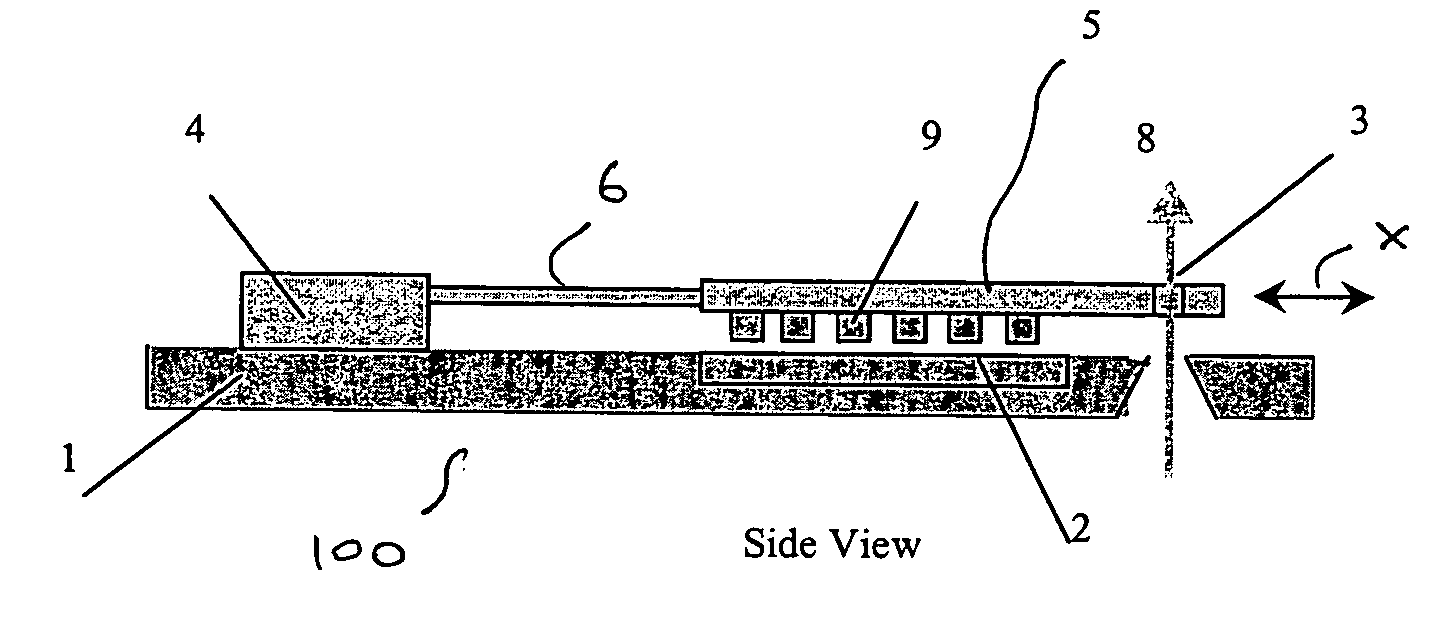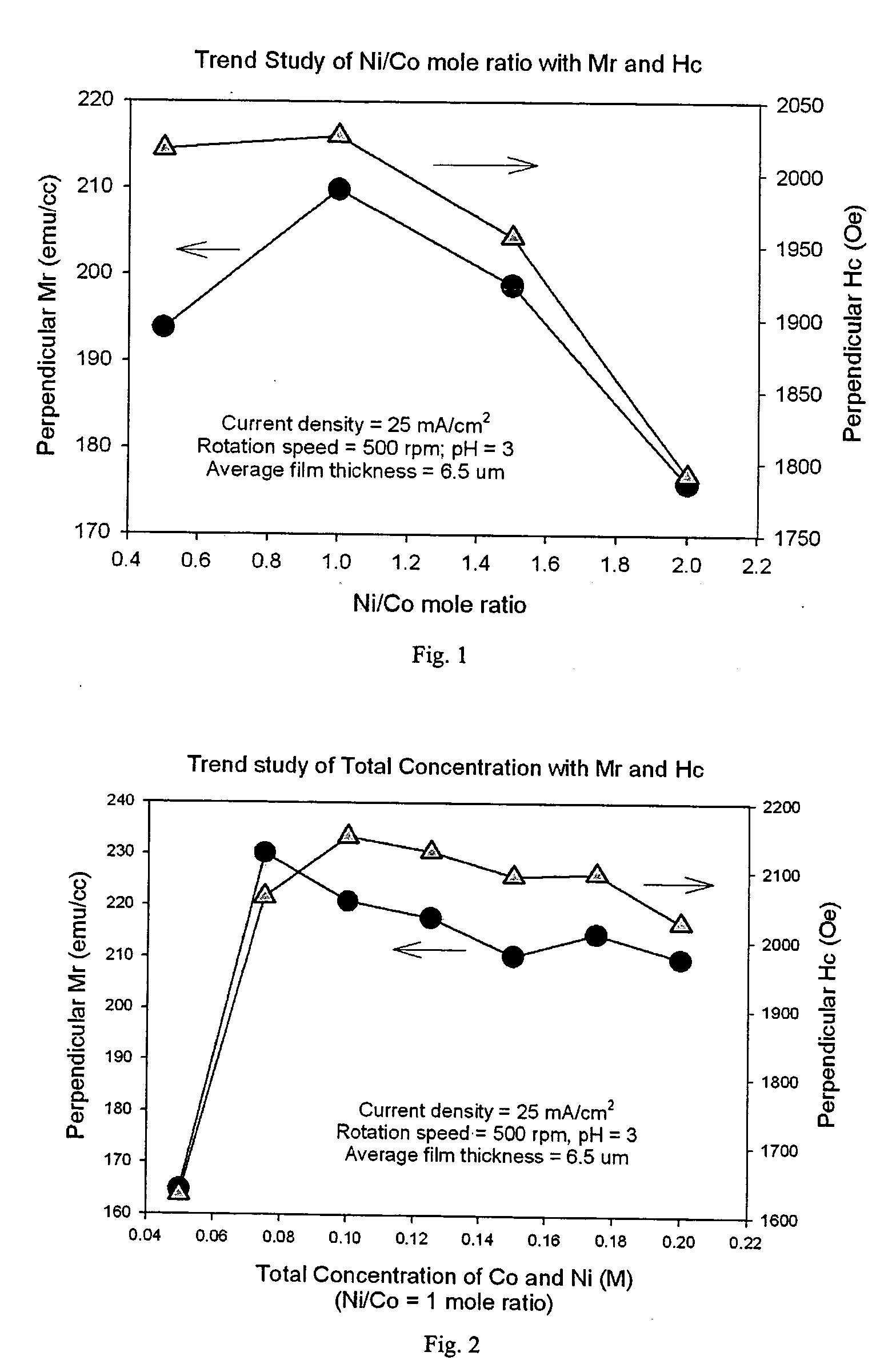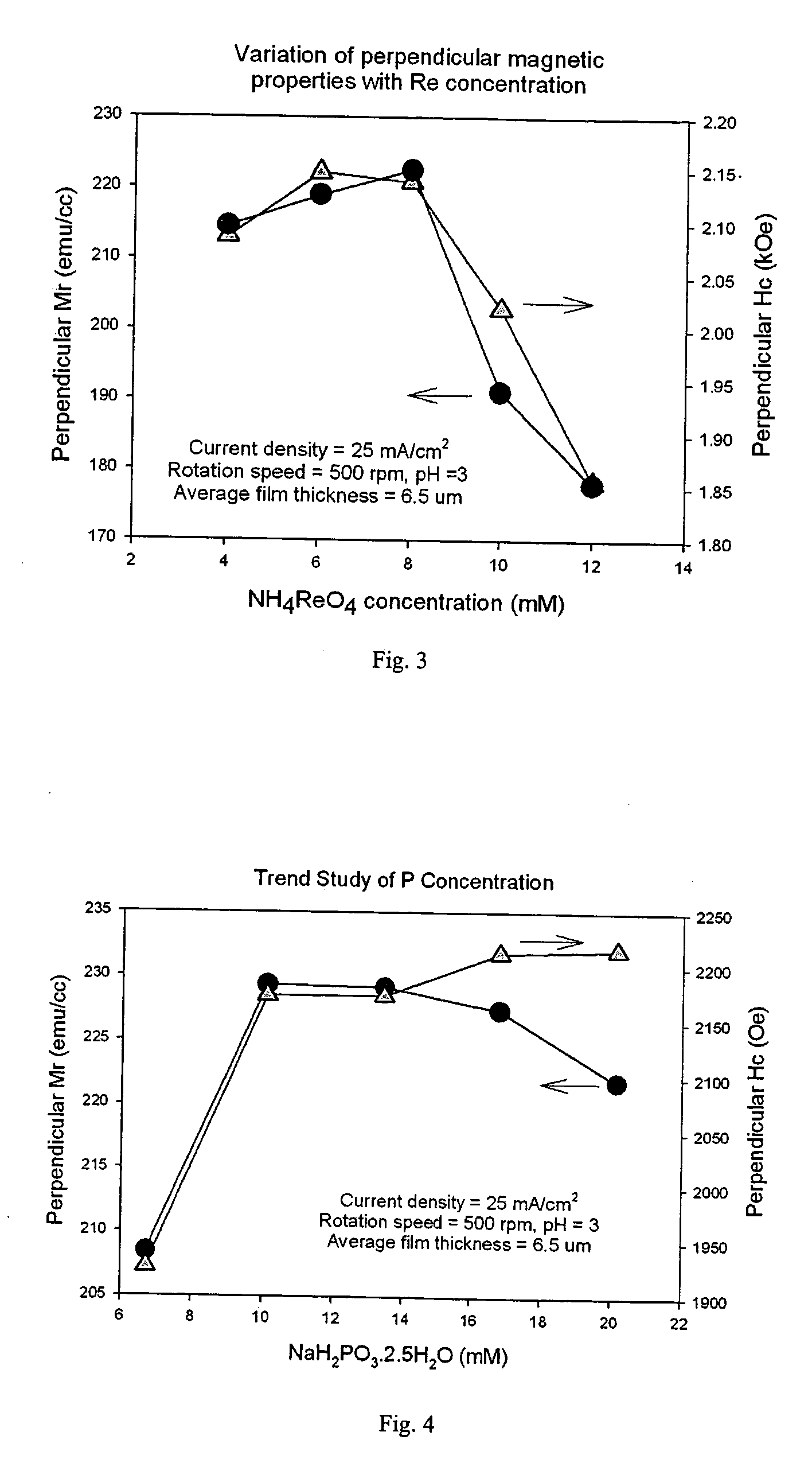Magnetic material, and a MEMS device using the magnetic material
a magnetic material and material technology, applied in the field of magnetic materials and mems devices, can solve the problems of not many studies on the vertical anisotropy of material systems fabricated by electroplating, not meeting the requirements of many magnetic mems devices, and limited magnetic film thickness reports, etc., to achieve good vertical magnetic properties and high magnetic field strength
- Summary
- Abstract
- Description
- Claims
- Application Information
AI Technical Summary
Benefits of technology
Problems solved by technology
Method used
Image
Examples
Embodiment Construction
[0027] The present inventors have performed the following experiments in which layers of magnetic materials (some being embodiments of the invention) were produced by electroplating and tested.
[0028] Firstly, circular glass substrates (12 mm diameter) were sputtered with a seed layer of either Cr(20 nm) / Au(200 nm) or Cr(20 nm) / Cu(200 nm) before electro-deposition using a rotating disk electroplating system. The sputtered Au or Cu layer was found to have (111) crystal orientation that is beneficial for the enhancement of vertical magnetic properties of a film to be subsequently deposited. The sputtered substrates were ultrasonically cleaned using trichloroethylene and ethanol. A conducting silver paste was applied onto the back-side and side-wall of the glass substrates at two opposite points so that an electrode of the electroplating system is connected electrically to the copper seed layer on the substrates. Before plating, the surface of copper seed layer was activated using sulp...
PUM
| Property | Measurement | Unit |
|---|---|---|
| Temperature | aaaaa | aaaaa |
| Thickness | aaaaa | aaaaa |
| Current density | aaaaa | aaaaa |
Abstract
Description
Claims
Application Information
 Login to View More
Login to View More - R&D
- Intellectual Property
- Life Sciences
- Materials
- Tech Scout
- Unparalleled Data Quality
- Higher Quality Content
- 60% Fewer Hallucinations
Browse by: Latest US Patents, China's latest patents, Technical Efficacy Thesaurus, Application Domain, Technology Topic, Popular Technical Reports.
© 2025 PatSnap. All rights reserved.Legal|Privacy policy|Modern Slavery Act Transparency Statement|Sitemap|About US| Contact US: help@patsnap.com



